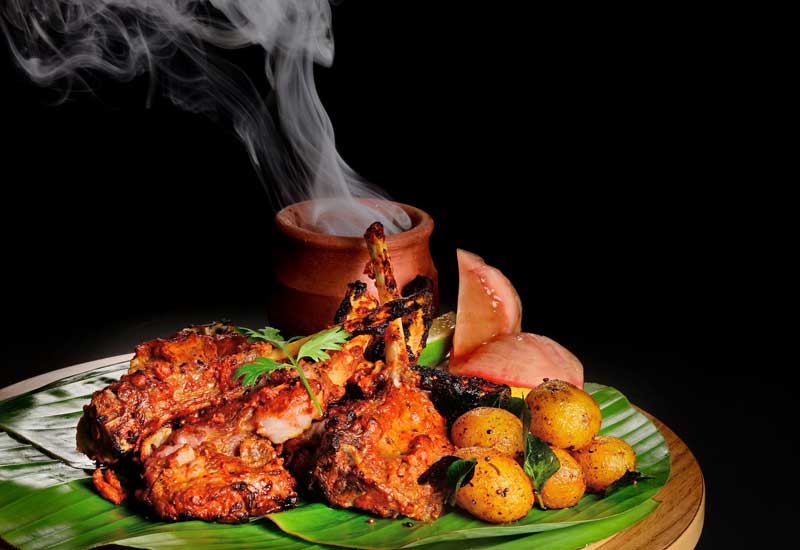 Claypot’s head chef Froz Khan said Indian cuisine is one of the most preferred cuisines in the Middle East region.
Claypot’s head chef Froz Khan said Indian cuisine is one of the most preferred cuisines in the Middle East region.
How popular is Indian cuisine in this region?
Himanshu Saini, head chef, Carnival by Tresind: Indian cuisine is gaining popularity all over the world. A brilliant new generation of Indian chefs are changing the world’s view of the cuisine. They are revolutionising Indian cuisine with their progressive take on various dishes, ingredients, cooking techniques and flavours, breaking down perceptions and reinterpreting Indian cuisine.
Manisha Advani, executive chef, Govinda’s: This region is a great market for Indian cuisine as opposed to many other regions, such as Europe or the Americas. The region we live in has a large population of South Asian expats, who crave a taste that reminds them of their home and families. Also, Arabs have a palette that is quite accustomed to the mélange of spices in Indian cuisine.
Froz Khan, head chef, Claypot: UAE has got the highest number of migrants from India. Neighbouring countries to India with a high population of expats in UAE such as Sri Lanka, Bangladesh, Afghanistan and Pakistan also has have similar food preferences as Indians. Indian cuisine is also famous in Europe and the Americas, with most western expats savouring speciality curries and kebabs.
Gaurav Singh, brand chef, Zafran Dubai and Kuwait: The large number of expatriates from the subcontinent, the versatility of the cuisine and the commonalities between Indian and Middle Eastern tastes are just some of the reasons Indian food is so popular in this region.
Vivek Kashiwale, head chef, Mint Leaf Dubai: Indian cuisine is one of the region’s most popular cuisines. Some review websites estimate that there are over 2,000 Indian restaurants in Dubai alone, which shows just how strong the demand is.
What trends have you noticed in Indian cuisine?
Saini: An obvious trend nowadays is chefs reinventing dishes with a modern twist. They are taking dishes that are not very popular outside India and presenting them to the world with a fresh take.
Advani: The current trend in Indian cuisine is visual innovation. With molecular gastronomy coming into play over the last two years, diners are looking for something that will not only please their taste buds, but take them on a visual experience.
Khan: Customers are well-travelled and ready to experiment with flavours, and their expectations are rising with time. A new breed of chefs are using technology to present and prepare food, such as molecular gastronomy, and also healthy/wellness foods are popular because customers are looking for lighter versions of dishes they love. Many are steering away from heavy, greasy food. In Indian cooking, methods such as grilling, ‘Tawa’ cooking (oven cooking) and braising with liquids are used frequently, however these days chefs are using cold-frost cooking and sous vide, which was unheard of in the past.
Singh: Progressive Indian is a growing trend. The use of edible chemicals to change textures, and using techniques like deconstruction and specification, creates modern Indian cuisine where the focus is on different elements on one plate.
Kashiwale: There is a growing trend to eat out, with a plethora of options and this competition has seen Indian food experience a big transformation, particularly in the UAE where many Indian restaurants are moving away from tradition. They are using new ingredients and modern styles of cooking — often focusing on presentation to attract customers. Even traditional menu items and classic recipes are being modified to give guests a new experience to help restaurants stand out from their competitors.

| Advertisement |








 Search our database of more than 2,700 industry companies
Search our database of more than 2,700 industry companies









